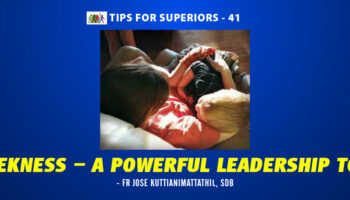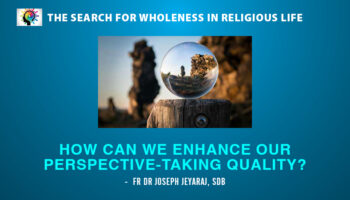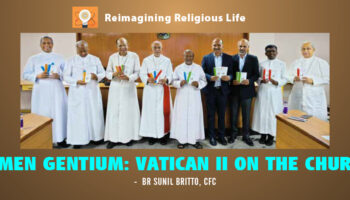Creativity contributes to emotional health and wellbeing. Psychologists in general are agreed on this. To quote one, Dean Simonton, professor at the University of California, Davis, specializing in the study of creativity, considers creativity not only “a sign of mental health and emotional well-being” but also one of the “very special ways human beings can display optimal functioning.” Creativity has been associated with psychological richness and cognitive complexity and enhanced well-being—both physically and psychologically.
Who are creative geniuses? Creative individuals are men and women who are able to think out of the box, who do not follow convention, and who are prepared to take risks and venture into the unknown … and come up with valuable novel ideas, theories or products that enrich society.
WHAT IS CREATIVITY?
Psychologists have reached a general agreement that creativity involves the production of “novel, useful products.” Robert Sternberg, professor of Human Development at Cornell University and author of many works on creativity, describes it as the production of “something original and worthwhile.” Simonton describes it as “the capacity to produce ideas that are both original and adaptive”—that is, ideas that are both new and useful.
The original and novel item produced may be intangible, such as an idea, a scientific theory, even a joke, or a physical object such as an invention, or a literary or artistic work, such as a painting or a piece of music.
Creativity involves divergent rather than convergent thinking. Convergent thinking involves aiming for a single, correct solution to a problem; divergent thinking involves generation of multiple possible answers to a set problem.
According to Simonton, creativity requires “primary process” thinking, as opposed to ‘secondary process” thinking. Primary process thought is more primitive than “secondary process” thought. While secondary process is devoted to conscious, logical, and realistic reasoning, primary process is replete with fantasy, imagination, irrationality, and unconscious motives.
CHARACTERISTICS OF CREATIVE PEOPLE
There are some typical qualities that characterize creative individuals. According to Simonton, creative people tend to be autonomous, independent, courageous and even bohemian (meaning: living a very carefree life, with little regard for social expectations and conventions). They are willing to let go off the tried and the tested. They have wide interests and show great openness to new experiences. They have the capacity to take risks, to try new ways of living and working. They think freely, and are less conventional in their thinking. They trust their own judgment and follow their internal convictions. They are flexible in their attitudes and behaviour. They have a greater tolerance for ambiguity and a greater acceptance of the many paradoxical facets of human nature. They are curious and open to experimentation and exploratory play.
any creative individuals are good at multi-tasking. They work on several issues simultaneously. They work on an issue for a while and then allow it lie to dormant for a while and move on to actively focus on another issue. Meanwhile, the earlier issue is incubating in the unconscious which begins to fabricate connections and possibilities until suddenly from nowhere a creative solution or a discovery emerges. This process of active engagement and incubation aids the creative process.
CREATIVITY AND ENVIRONMENT
Although we are inclined to consider creative activity to be an individual matter, Simonton points out that it often takes place in a social context. Creativity has its roots in a supportive yet demanding home environment. Creative people usually have parents who set high standards of achievement. At the same time, they are also quite permissive, allowing their children much freedom to experiment and take risks.
Most creative persons also have a supportive and highly skilled mentor in their chosen field of interest. They often work in fields unexplored by others. Exceptionally creative people devote almost all of their time and energy into their area of interest. Here is it is relevant to recall the words of the great physicist Albert Einstein: “Genius is ninety percent perspiration and ten percent inspiration.”
CREATIVITY IN THE FORMATION SETTING
The role of challenging situations in fostering creativity has implications, especially for the formation setting. For creativity to blossom and mature in the candidates to priesthood or religious life, the environment of the formation house or seminary has to be challenging. Candidates have to face situations that demand effort and enterprise. They have to be pushed farther and higher than they think they are capable of. Lack of challenge produces mediocrity. More than half (52%) of the formators who participated in sociologist Paul Parathazham’s study on religious formation acknowledged that current formation programmes are not demanding enough. Almost half (49%) felt the formation environment is too sheltered. Forty-one per cent stated that there is too much emphasis on conformity. Clearly, the bar has to be raised in terms of standards candidates are expected to reach.
Another important aspect of creativity which also has special relevance for priestly and religious formation is that divergent experiences facilitate creativity. Exposure to a variety of experiences expands the mind, taking us out of the rigid confines of a limited and narrow life. Such exposure not only allows creative juices to flow, but also broadens our perspectives and brings flexibility in thinking and attitudes. Unfortunately, the current formation process, in many cases, prefers regimentation and conformity. Thinking that is divergent from, and especially opposed to, traditional beliefs and practices, is not usually encouraged in the formation setting. Experiences available to formees are also, in many cases, very limited.
CREATIVITY AND ADVERSITY
Another aspect to be kept in mind, especially in the context of formation of priests and religious, is that creativity is promoted by adversity. Some of the most creative people ion the world were reared in unusually adverse childhood situations. Psychologists Martin Seligman and Mihaly Csikszentmihalyi, who explore optimum human performance, have found that creativity is fostered by “challenging experiences that help strengthen a person’s capacity to persevere in the face of obstacles.” Ellen Winner, a psychologist who has studied the profiles of artists and innovators, has pointed out that the experience of childhood stress and trauma is a major characteristic of highly creative people. Two other noteworthy characteristics of these persons, according to Winner, are these: “They are rebellious. They have the desire to alter the status quo.” Neither of these characteristics, unfortunately, are generally appreciated or fostered in formation settings.
A really inspiring true story of creativity in the midst of adversity is that of Steve Jobs. He is considered an icon of creativity in the world of information technology because of his creations—Apple Computers, the iPod, the iPhone and the I-Pad, devises which have revolutionized ways people work and communicate. But many may not know that he was dismissed from the company which he had founded. He would later say that this was the best thing that happened to him. It forced him to start from scratch, and invent new things. Soon after, he was diagnosed with pancreatic cancer, which doctors thought inoperable. Against such odds, the man went on to become one of the world’s most admired creative geniuses, exceeding existing benchmarks of performance by miles. Jobs shared stories of adversity and creativity in a much appreciated Commencement speech at Stanford University some years ago. He has left a great legacy for Apple Computers and an inspiring personal story of creativity emerging from adversity.
Creative geniuses often pay a steep price—but they make a huge difference to people’s lives.
For reflection:
- Who are the really creative people you know? What makes them creative?
- How can the environment of our families and formation houses be more supportive of the creative process?
To read the entire article, click Subscribe






